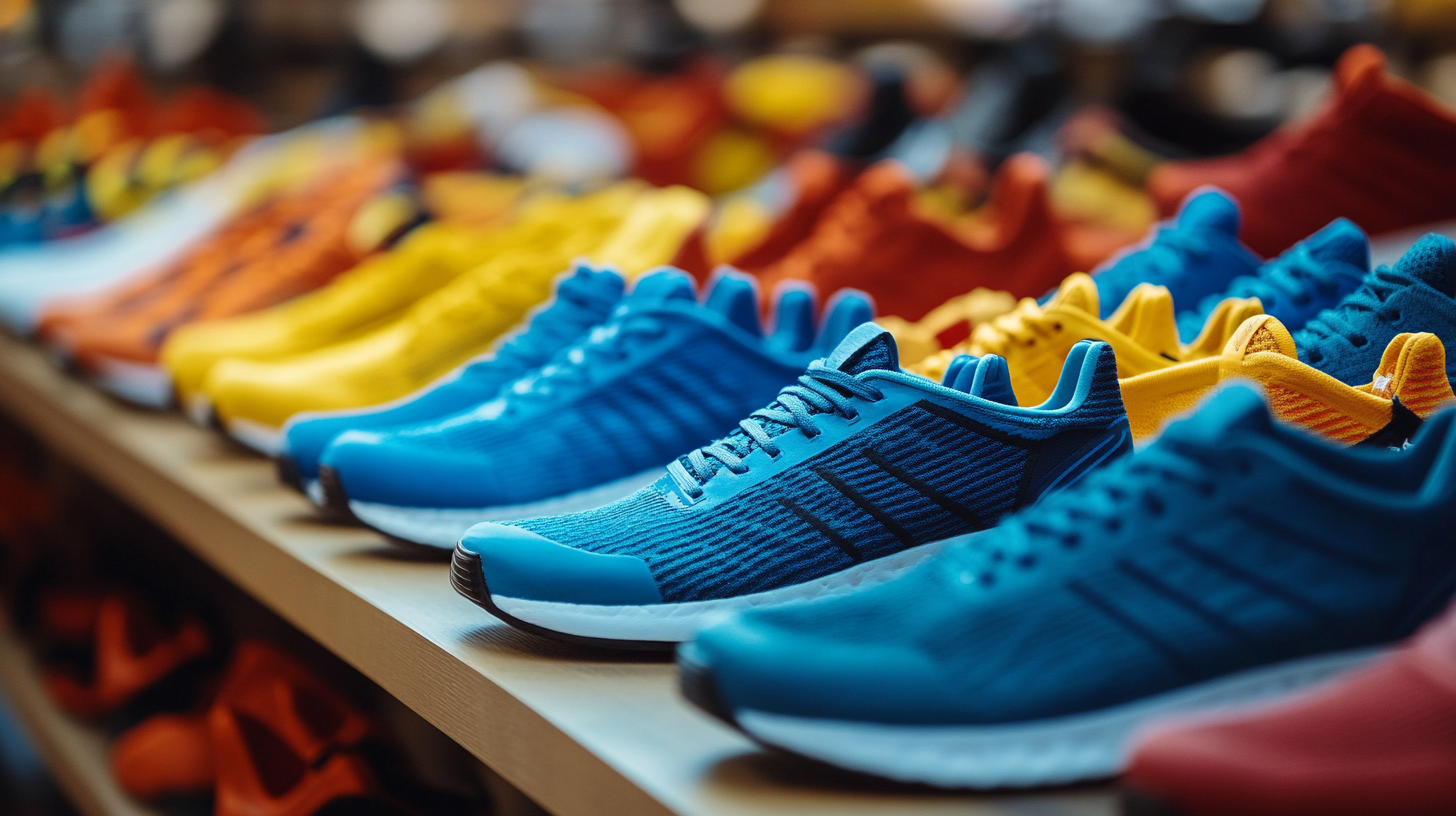
The global athletic shoes market is projected to witness significant growth, reaching a staggering valuation of approximately $100 billion by 2025, according to recent industry reports. As consumer awareness about fitness and wellness continues to rise, the demand for high-quality athletic shoes is surging. This phenomenon is driven not only by the increasing popularity of sports and outdoor activities but also by the growing trend of athleisure, where athletic shoes are integrated into everyday fashion.

In this ultimate guide, we will provide a comprehensive checklist for sourcing the best athletic shoes worldwide, taking into account the latest technological trends and innovations shaping the industry. From advanced materials to sustainable manufacturing processes, understanding these elements will be crucial for retailers and consumers alike in making informed decisions in this dynamic market.
When it comes to selecting the best athletic shoes, understanding the key features of cushioning, support, and fit is essential for optimizing performance and comfort. According to a report from the American Orthopaedic Foot & Ankle Society, inadequate cushioning can lead to a higher incidence of injuries, particularly plantar fasciitis and shin splints. Shoes with effective cushioning systems, such as those utilizing EVA foam or gel technology, can decrease impact forces by up to 30%, significantly reducing strain on the feet and joints.
Support is another critical factor, especially for athletes who require extra stability during dynamic movements. Research indicates that around 70% of runners overpronate, meaning their feet roll inward excessively. This condition can lead to injuries if not adequately addressed. Shoes designed with motion control technologies can enhance support, stabilizing the foot and reducing the risk of common overuse injuries. A study by the Journal of Sports Sciences emphasized that shoes featuring arch support can improve performance metrics, such as running economy, by as much as 5%.
Lastly, fit statistics play a pivotal role in shoe selection. A well-fitted shoe should allow for a thumb's width of space in the toe box to prevent discomfort and blisters. The Journal of Biomechanics highlights that improper fit is a leading cause of athletic shoe-related injuries, accounting for approximately 40% of all cases. Ensuring proper width and volume can greatly affect an athlete's overall experience, contributing to peak performance and injury prevention.
When it comes to choosing the right athletic shoes, understanding the various types is crucial for optimal performance and injury prevention. According to a report by the American Academy of Podiatric Sports Medicine, approximately 50% of runners experience injuries due to improper footwear. This statistic highlights the importance of selecting shoes designed for specific activities.

Running shoes, for instance, typically feature cushioning for shock absorption and are designed to promote a natural gait. Data from the Sports Shoe Market Report indicates that the global market for running shoes is expected to reach $14 billion by 2025, driven by a growing awareness of health and fitness. In contrast, training shoes offer more stability and support for lateral movements, essential for activities such as CrossFit or aerobics. These shoes are often built with durable materials to withstand varied training intensities while keeping the foot secure.
For athletes engaged in sports-specific activities, choosing the right footwear can significantly enhance performance. A study shows that basketball players wearing specialized shoes experience 23% less risk of ankle injuries compared to those in generic sneakers. Such insights emphasize the importance of investing in shoes tailored to the demands of your chosen sport, ensuring both comfort and safety on the field or court.
In the realm of global sourcing for athletic footwear, understanding which countries lead in manufacturing quality products is crucial for businesses seeking to stay competitive. Countries like Vietnam, China, and Indonesia have established themselves as powerhouses in the industry, each offering distinct advantages. Vietnam, in particular, is gaining reputation for its eco-friendly manufacturing processes, appealing to brands looking to cater to environmentally conscious consumers. The focus on sustainable practices not only enhances product appeal but also aligns with the increasing demand for corporate social responsibility in sourcing decisions.
As brands seek reliable manufacturers, online platforms have become essential tools for connecting with suppliers worldwide. In 2025, various websites are gearing up to facilitate these connections, providing a seamless experience for businesses to explore potential partnerships. With the rise of Chinese sports brands breaking into the global market, there is a significant shift toward innovation and competitive pricing, making China an attractive destination for sourcing quality athletic shoes. Understanding these trends can empower retailers and entrepreneurs to make informed decisions about sourcing, ultimately enhancing their product offerings in an ever-evolving marketplace.
When it comes to selecting the best athletic shoes, brand reputation plays a crucial role in guiding consumers toward quality products. Industry leaders often showcase robust sales performance, which serves as a strong indicator of a brand's reliability. Analyze the sales figures of top brands over recent years to identify those that consistently outperform their competitors. Brands that maintain high sales across diverse product lines not only reflect the trust of consumers but also imply sustained innovation and quality. This can help you narrow down your options significantly and focus on those brands that are true market leaders.
Customer loyalty data further enriches the evaluation of brand reputation. Understanding how brands cultivate and maintain their customer base can reveal insights into product quality and post-purchase satisfaction. Look for brands that boast high retention rates and strong customer feedback; these elements suggest that a significant number of buyers return for future purchases. Online reviews, social media engagement, and consumer surveys can provide valuable information about overall customer experience. By prioritizing brands with passionate, loyal fans, you can feel more confident that your choice in athletic shoes aligns with both quality and performance expectations.

When purchasing athletic shoes, it’s essential to prioritize both
cost-effectiveness and
durability. These two metrics can significantly impact your overall satisfaction and performance.
Cost-effectiveness means finding shoes that not only fit your budget but also deliver the desired quality and longevity.
Consider researching brands that offer
warranties or satisfaction guarantees, which can provide peace of mind and protection against premature wear.
Durability, however, is often the more important factor to weigh against cost.
The materials used in athletic shoes—such as high-quality synthetics, breathable mesh, and robust outsole rubber—can enhance their lifespan and reduce the frequency of replacements.
Investing in shoes that can withstand various terrains, whether on smooth pavements or rugged trails, ensures that they remain in optimal condition longer.
A careful balance between price and durability can lead to a more economical choice in the long run, allowing athletes to focus on their performance rather than worrying about their footwear.
